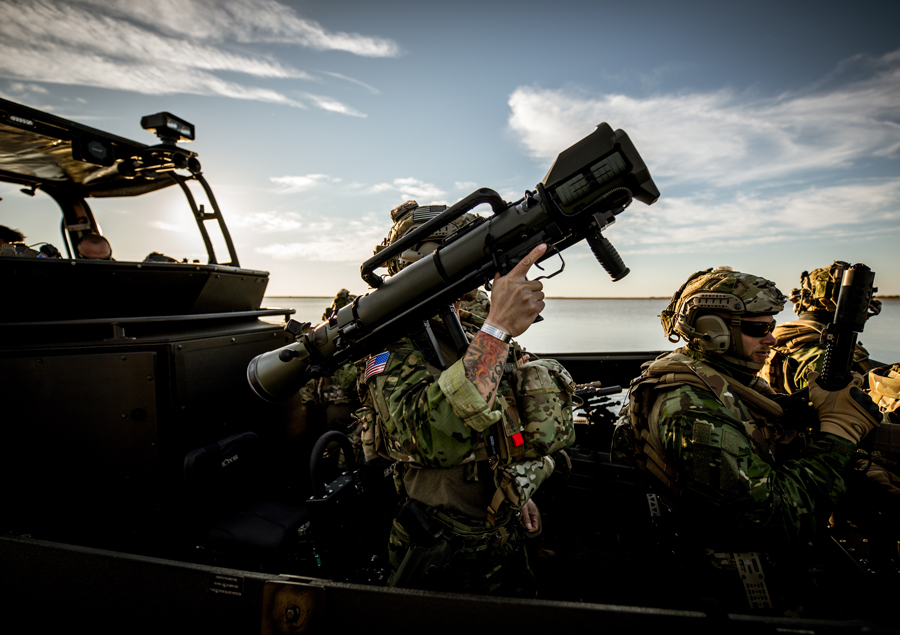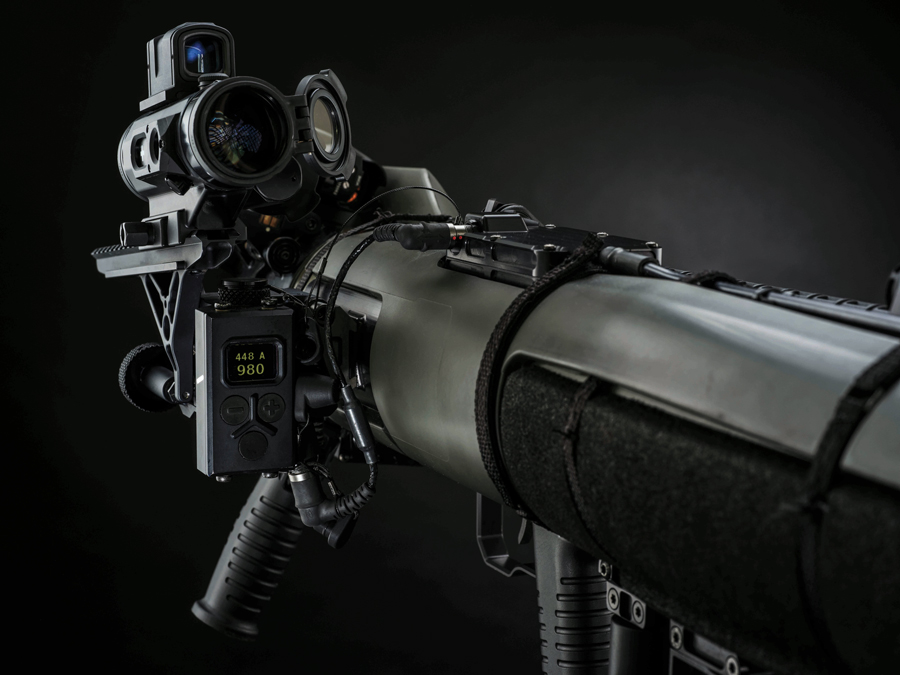SAAB Carl-Gustaf®
SAAB Carl-Gustaf® Q&A with Mats Fagerberg at DSEI 2023
Jack Richardson
21 September 2023
The War in Ukraine has dispelled the popular view that tanks are obsolete, with the result that militaries the world over rushing to procure systems to counter this resurgent threat. One of the most notable is Saab’s Carl-Gustaf so DPI sat down with Mats Fagerberg M.Sc, MBA, Head of Marketing and Sales, Saab AB - Business Unit Ground Control Combat, to find out more.

DPI: could you give me a short history of the Carl-Gustaf?
"a shoulder-fired weapon for infantry
that could kill a tank"
Mats Fagerberg: Carl-Gustaf was born out of a requirement during the Second World War when the tank was the dominant player on the battlefield and there were very few tools available to the infantry to combat the tank. You basically needed another tank to be able to combat the tank and the requirement was that we should have a shoulder-fired weapon for infantry that could kill a tank.
That was what brought about the M1, the first generation Carl-Gustaf, which came into Swedish service in 1948. Initially there were only two capabilities. There was a high explosive round for anti-personnel purposes and a HEAT round for anti-tank purposes. That was the first two rounds and there was nothing else, and then it grew a little bit.
"It got its baptism of fire really
in the Congo"
It got its baptism of fire really in the Congo conflict where it was used by both the Irish and Swedish UN soldiers. Combat experience from that was pushed into the second generation, which was launched in the early sixties and that was more or less an export version because there were very few M2s in the Swedish Army, whereas the entire world almost saw the capability when it came into its own as a weapon of choice for a lot of armies in the sixties.
"we now have 12 different types
of combat ammo for the Carl-Gustaf"
"It’s definitely a multi-purpose system"
So, sixties and seventies, part of the eighties, the M2 was the dominant factor and during that time. Then, in the late eighties, the M3 came along with more ammunition from the combat experience through the nineties, I would say, driven a lot by the US Army combat experience in Desert Storm and Somalia. So, we added more anti-structure capability and more anti-personnel rounds to the system and we’ve been adding capability while not really taking any capability away, which is why we now have 12 different types of combat ammo for the Carl-Gustaf and capability in four distinct sectors of anti-tank, anti-personnel, anti-structure and support with illumination and smoke; which makes the Carl-Gustaf quite unique because it’s now a tool that can solve basically any problem the infantry might face on the battlefield which no other system can do. It’s definitely a multi-purpose system.
DPI: What else would set it apart from the competition?
"a rifled barrel will give you a lower muzzle velocity
but it will increase accuracy"
MF: Carl-Gustaf has a rifled barrel and that has pros and cons because a rifled barrel will give you a lower muzzle velocity but it will increase accuracy. So Carl-Gustaf is a distinct squad level weapon, the practical weapon range is about 1000 metres, but the squad doesn’t see further than 800 metres anyway so it’s perfect for an infantry squad. That’s where we have found our niche, so to speak, that puts it apart because unlike other reloadable systems like the RPG7 and Panzerfaust and other few others don’t have the rifled barrel and therefore don’t have the accuracy, they can fly further but what’s the point of flying further if you don’t have accuracy, it doesn’t make sense? So I think it is unique in the sense that we are very accurate and we have very distinct squad and platoon level customers.
DPI: you talked about the Carl-Gustaf has evolved since 1948 in various conflicts since then, so what lessons have you drawn from Ukraine to keep upgrading it?
"anti-armour is very much in vogue right now"
MF: That’s a little bit difficult to say because even though the war has gone on for a year and a half now, it’s actually still too early to draw conclusions from it because there has been so many facets to the war. The initial phase where the Russian’s were trying to take Kyiv, there was a very distinct anti-armour element to the fight and we need to kill the Russian armour. We’ve seen YouTube like everybody else, you only put up YouTube videos that are good. So, it’s difficult to draw any conclusions for us because we’re not there, we still don’t have any reports coming from anyone who is objectively engaged in the conflict. But, it’s very clear that for the past 20 years, the conflict anatomy has been in the Middle East, the Global War on Terror, not tanks, no armoured vehicles at all. It’s just basically a low-tech enemy, at best case they had Toyota pickups but they didn’t have armour. The capability that has grown out of the Global War on Terror is very much anti-personnel, the anti-armour has been put on the back burner, there hasn’t been interest in anti-armour.
What we see from Ukraine already, the interest we get from our people is that the anti-armour is very much in vogue right now, that capability needs to be upgraded and we’re working very hard to do that right now.
DPI: we’ve seen that the British Army are bringing the Carl-Gustaf back into service as the latest model, which other markets are you targeting?
"It’s a multi-role system"
MF: Carl-Gustaf is operation in 50 different countries, we are not actively pursuing all fifty counties because that’s just undoable, but we are pursuing most of those countries. It’s a multi-role system, it’s been used differently in South America or Europe or Asia or Africa so no two customers use it the same way. We have to adapt all the customer’s needs which is why we are working with everyone.

DPI: in terms of meeting demand, you’ve recently opened a facility for manufacturing the system in India, so in terms of ramping up demand is that something you could envisage happening in other countries?
MF: Yes, I won’t go any further than that but yes, you will probably see that in other countries.
DPI: Finally, you say the Carl-Gustaf first entered service in 1948 so what do you see the future being for the system, could there be an M5 variant with the system in service in 2048?
"We have a concept for a guided munition"
MF: Yeah, 100%, the base of the Carl-Gustaf is such is that it’s going to live, we need to constantly reinvent it and improve it of course and adapt to the conflict anatomy and what capabilities the customer needs. Absolutely, I think there will be an M5 and I think there will be an M6 but the rifle is one thing, it’s the ammunition that provides the capability. I think we will see guided munitions, we’re all ballistic now. We have a concept for a guided munition, but it’s not really a product, but I think that will materialise within the next decade or so and then we will be very very humble and listen to the user to tell us what they [our customer] needs.